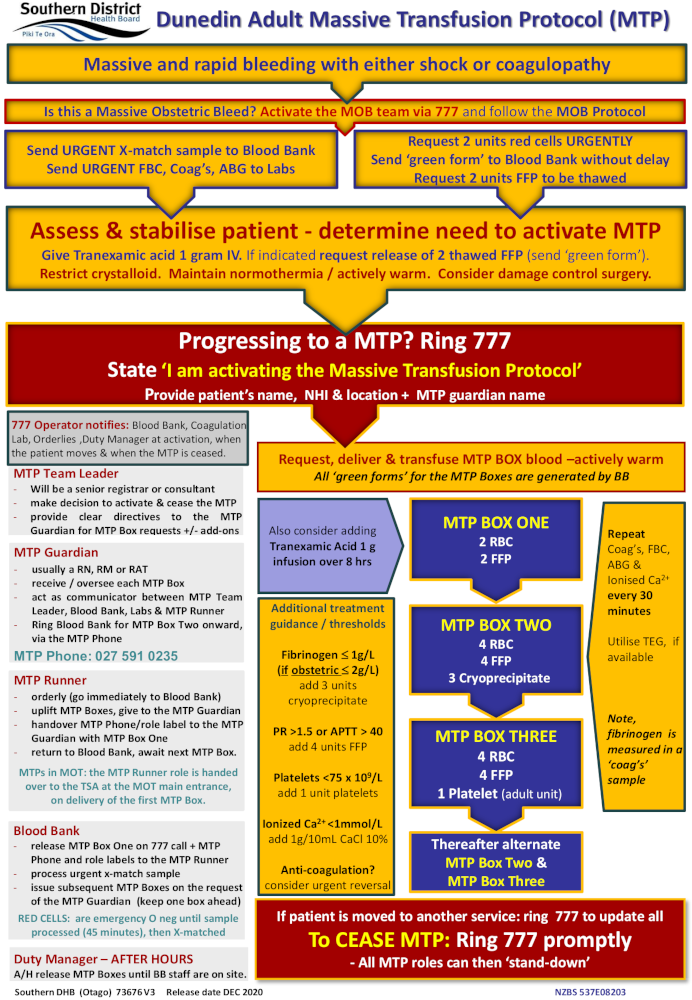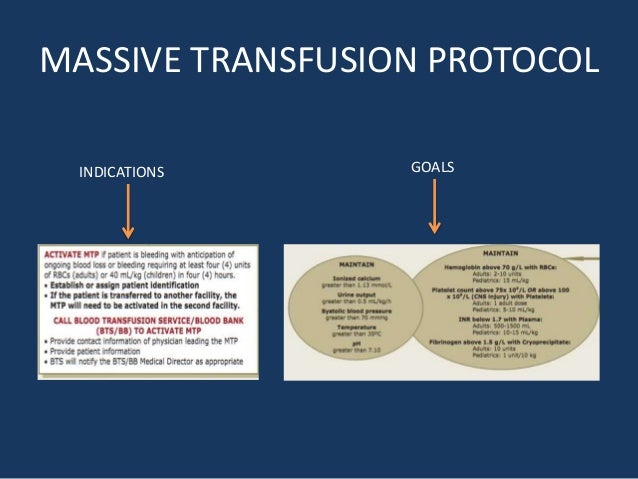


This underscores the need for future prospective studies to determine the most effective resuscitation methods for paediatric populations to improve outcomes and therapeutic safety for massive bleeding.

Eighty nine percent of sites have type - O RBCunits and 48%of sites had thawed plasma units stored in an immediately available location.Ĭonclusion: There is a wide variation in MTPs among paediatric hospitals with regard to both activation criteria and products administered. Fifteen percent of sites use antifibrinolytics in their MTPs. A majority of sites (78%) targeted a ‘high’ (?1 : 2) ratio of plasma to red blood cells (RBC). Physician discretion w as the most common activation criteria (89%). Results: Forty - six survey responses were analysed. We collected information on how the MTP is activated, what therapeutics are given, frequency of its use, and how it is audited for compliance. Study design and methods: We conducted a survey of MTPs at hospitals in the United States and Canada, including children’s general hospitals, children’s specialty hospitals and children’s units in general hospitals. This study aimed to survey cur rent MTP policies and the frequency of activation at paediatric care centres. While massive transfusion protocols (MTPs) have been investigated and used in adults to reduce death from hemorrhage, there are a paucity of published data on MTP practices and outcomes in children. Spinella4 A survey of US and Canadian hospitals ’ paediatric massive transfusion protocol policies Transfusion Medicine, 2016, 26, 49 – 56īackground: Trauma is the leading cause of death in children > 1 year of age, with hemorrhage as the most common cause of med ically preventable death. All authors cited conclude that MTP in the pediatric population is an area in need of further study. The trigger point for MTP activation s eems to be clinician - based due to the lack of sufficient studies. The A AST 2014 PLENARY PAPER concluded that a threshold of 40 mL/kg of all blood products given at any time in the first 24 hours reliably identifies critically injured children at high risk for early and in - hospital death. Why are these articles are relevant? A literature review shows that there is insufficient data and protocols published on MTP in children. While trauma is the leading cause of death in children >1 year of age, hemorrhage is t he most common cause of preventable death.A consistent activation point has not yet been defined in children. Overview: Massive transfusion protocol is used readily in the adult population with some clearly defined activation criteria such as Assessment of Blood Consumption (ABC) Score.


 0 kommentar(er)
0 kommentar(er)
